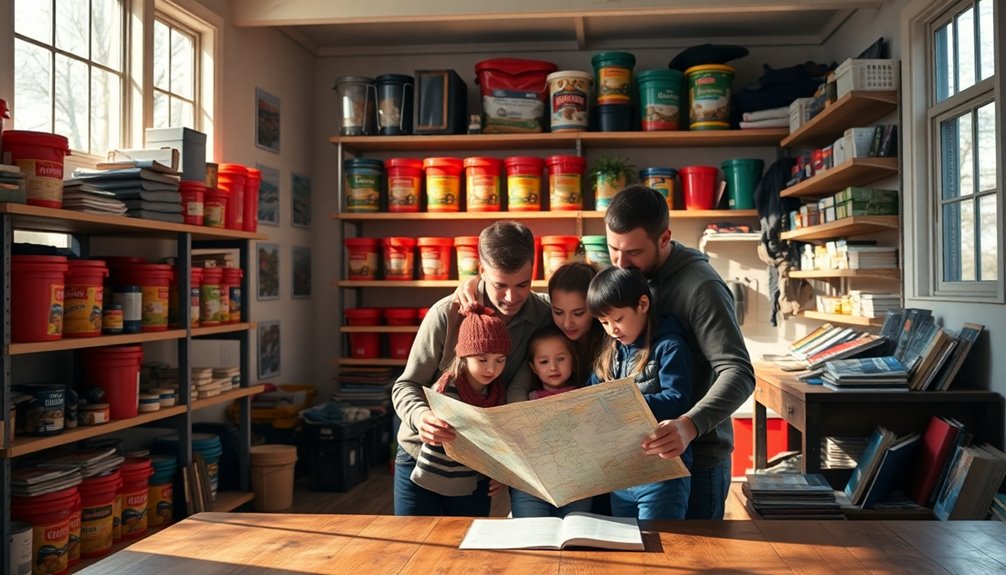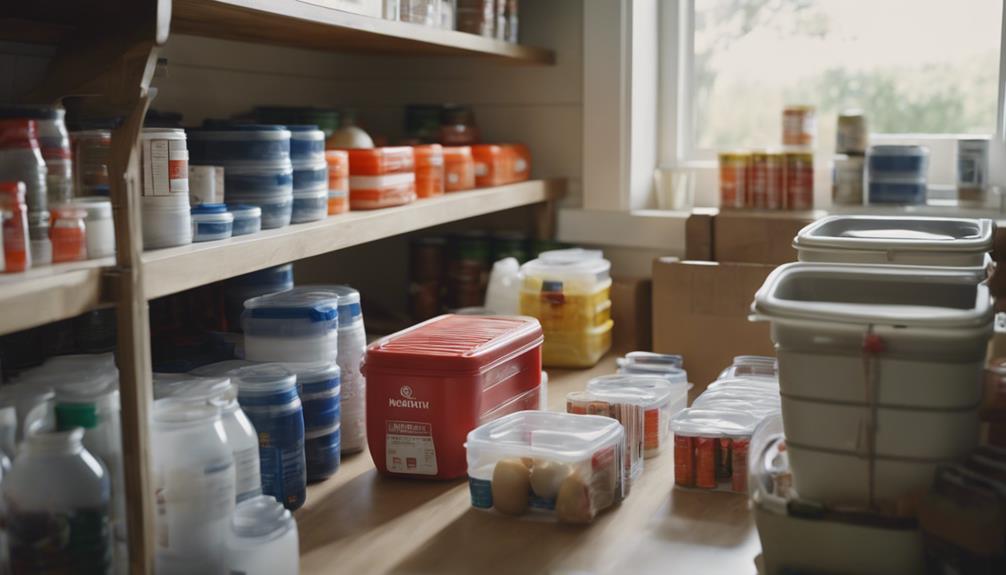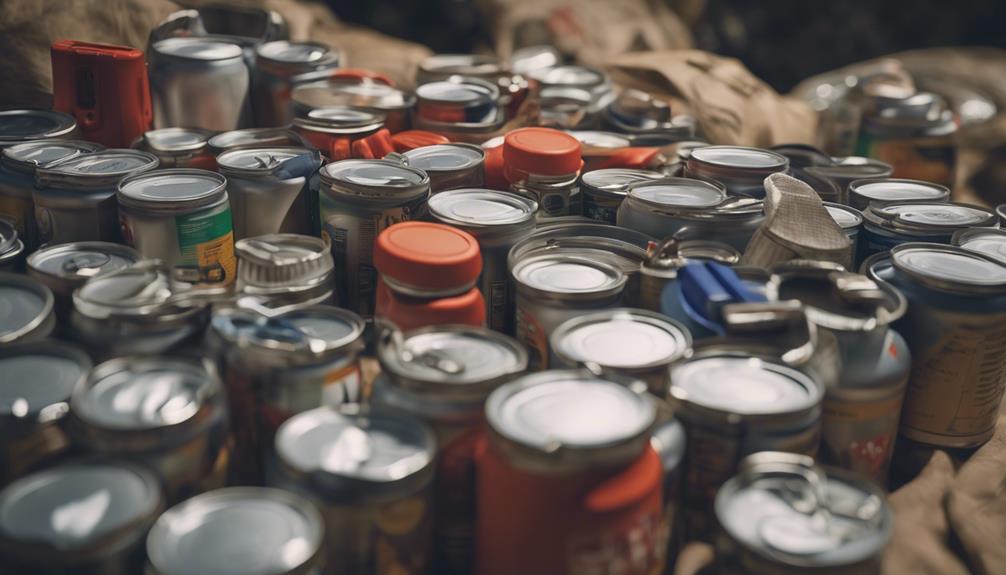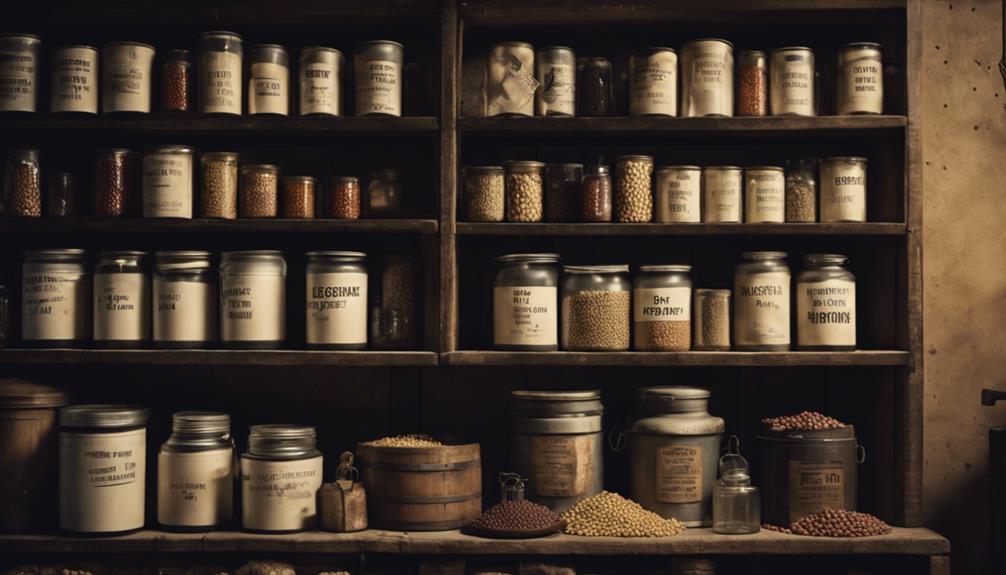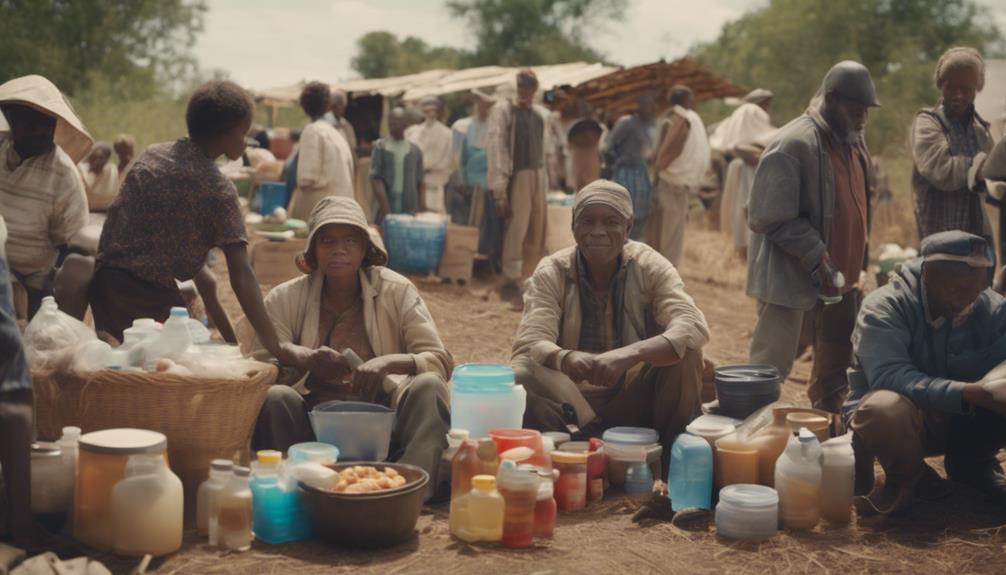Looking for a prepper checklist PDF? You’ve just found a treasure! This portable plan helps you prepare for when civilization faces tough times. It covers everything from building sturdy shelters, collecting safe water, and stocking up on nutritious food, to packing essential first aid supplies and energy tools. Imagine having a guide that keeps you ready for anything! You’ll even learn how to stay connected when everything goes dark. Stay cheerful and be prepared with this handy checklist, because you never know when you’ll need it! If you keep going, you’ll discover even more exciting survival tips! This prepper checklist PDF also includes tips on acquiring essential survival gear, such as communication devices, protective clothing, and tools for hunting and gathering. It’s like having a personal survival instructor right at your fingertips! Don’t wait until it’s too late to start preparing – download the checklist now and take the first step towards being self-sufficient in any situation.
Key Takeaways
- Create a comprehensive shelter plan, including lean-to, A-frame, or tarp shelters for immediate protection against the elements.
- Stockpile essential water supplies, aiming for a seven-day reserve and utilizing collection methods like rainwater catchment.
- Build a diverse food inventory with long-lasting grains, canned goods, and high-energy snacks to ensure sustained nutrition.
- Assemble a well-equipped first aid kit with essential medical supplies, tools, and medications for emergency health management.
- Invest in reliable power generation and communication tools, such as solar chargers and battery-operated radios for maintaining connectivity during crises.
Shelter and Protection Essentials
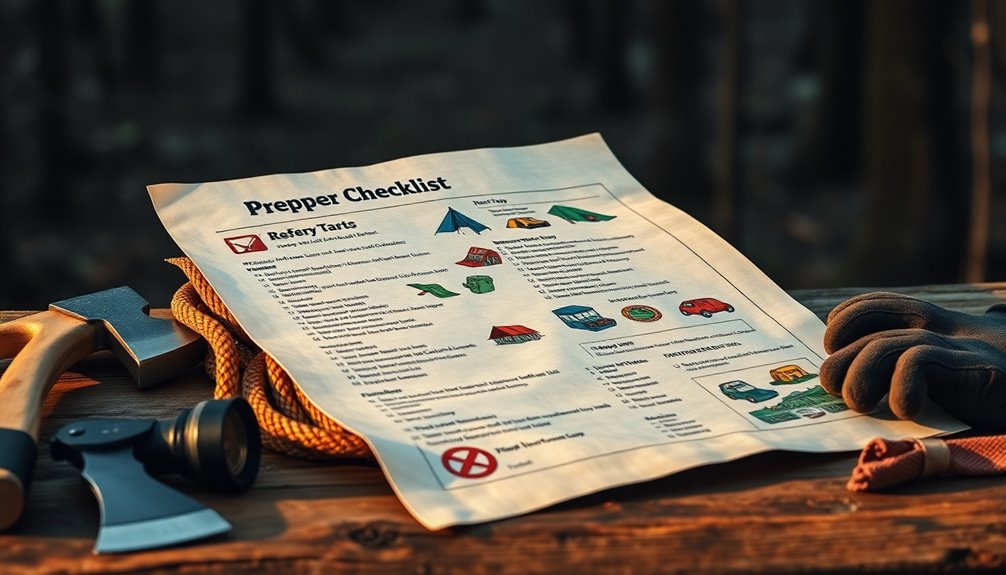
When you're preparing for emergencies, having a solid shelter and protection strategy is crucial. Think of your shelter as your cozy home away from home!
You can build a lean-to shelter using a sturdy branch or fallen tree as your main support. Lean smaller branches against it at a 45-degree angle, then cover the top with leaves and pine boughs. Don't forget to position the open side away from the wind for maximum warmth!
If you prefer something quicker, an A-frame shelter is super simple to create! Just use two sturdy branches for support, and you'll have a stable structure in under an hour. It's like building a mini fort!
For quick setups, a tarp shelter is fantastic. You just need an 8×10 tarp, some cordage, and two trees spaced apart. Tie the tarp between them, stake down the corners, and voilà!
Lastly, don't forget to consider insulation materials like leaves and grass. They'll keep you warm and cozy! Regular maintenance and inspection of your shelter will ensure its longevity and overall livability.
With these shelter types and materials, you're all set to stay safe and snug in any situation. Happy building!
Water and Hydration Strategies

Staying hydrated is vital during emergencies, so it's essential to have a solid plan for water storage and purification. You should aim to store at least a seven-day supply of water for each person, which means about two quarts for drinking and another two for food preparation and sanitation.
Use containers made for food, like 5-gallon plastic jugs or 55-gallon drums, but steer clear of anything that held toxic stuff! Collecting water is also key. You can catch rainwater with barrels or tap into a well if you live in the country. Did you know you can even drink water from trees like birch or maple in late winter? How cool is that? Additionally, consider using an atmospheric water generator (AWG) to extract moisture from the air if you have access to power.
When it comes to purifying, boiling is your best buddy! Just boil water for one minute; five if you want extra safety. You can also use filters like the LifeStraw or water purification tablets.
Lastly, don't forget about carrying your water. It's heavy—8.35 pounds per gallon! So, think about portable containers like a camping backpack for easy transport.
Stay hydrated, and you'll be ready for anything!
Food and Nutrition Supplies
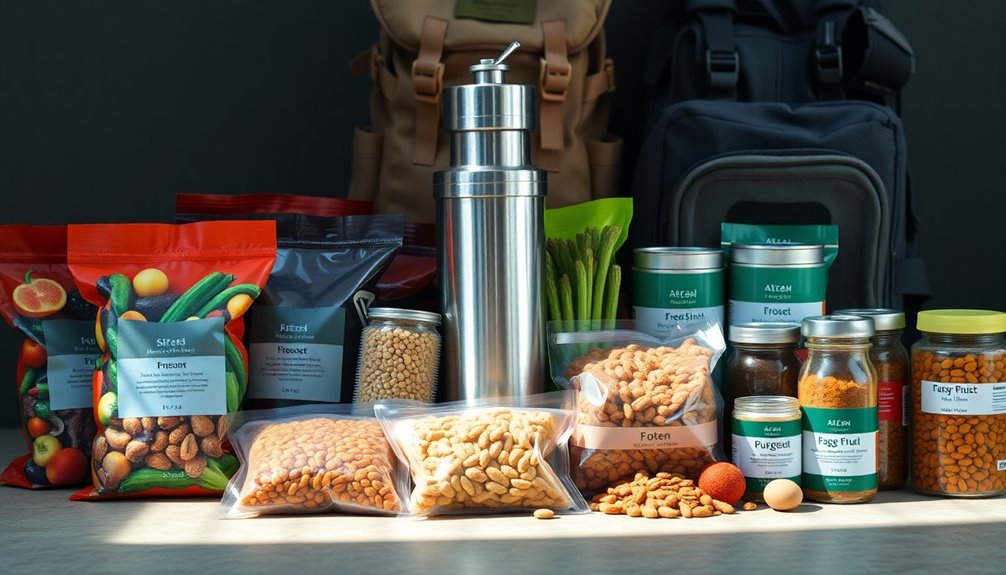
Having a well-thought-out supply of food and nutrition is crucial in any emergency situation. You'll want to stock up on grains like rice, oats, and pasta, which are filling and versatile. Grains serve as foundational foods that are not only long-lasting but also offer essential nutrients.
Don't forget about canned goods! Canned fruits, vegetables, and meats can last a long time and make meals easy. Plus, they taste great—especially when you're hungry!
When storing your food, use airtight containers to keep everything fresh. Mylar bags and plastic buckets are excellent choices, too.
Remember to control moisture and oxygen, so your food stays safe. Label and date your supplies, so you know what to eat first!
Special diets matter, too. If you have infants or family members with specific needs, make sure to include suitable foods.
High-energy snacks like peanut butter, granola bars, and trail mix are fantastic for quick boosts when you need them most.
First Aid and Medical Gear
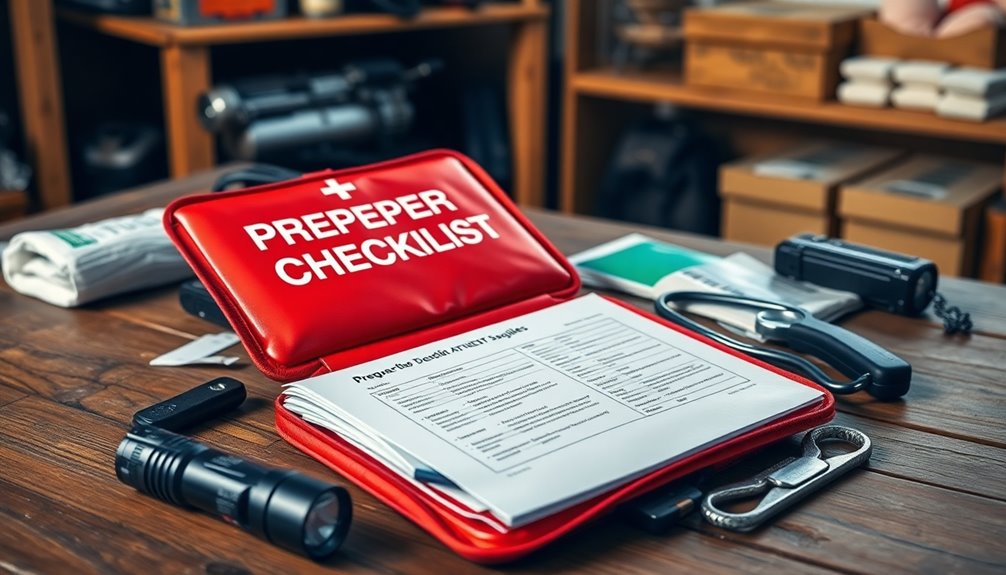
A well-stocked first aid kit can be a lifesaver in emergencies. Imagine needing a bandage for a scraped knee or ointment for a nasty cut!
You'll want to include adhesive bandages of all sizes, gauze pads, and medical adhesive tape to keep everything secure. Don't forget antiseptic wipes and antibiotic ointment packets to clean and protect your wounds.
Next, think about medications. You should pack pain relievers like aspirin and ibuprofen, plus antihistamines for pesky allergies. If you've got any prescription medications, make sure to have those on hand, too! Regular checks for expiration dates are crucial to ensure your medications remain effective.
It's smart to include diarrhea medication and antacid tablets, along with oral rehydration salts, to keep everyone feeling their best.
For wound care, stock up on elastic wraps, triangular cravat bandages, and hydrogel pads—these can help with all kinds of injuries.
Tweezers, safety pins, and paramedic shears are handy tools to have, while a CPR mask and heat-reflecting blanket can make a big difference in emergencies.
With your first aid kit ready, you'll be prepared to handle whatever comes your way!
Energy and Communication Tools
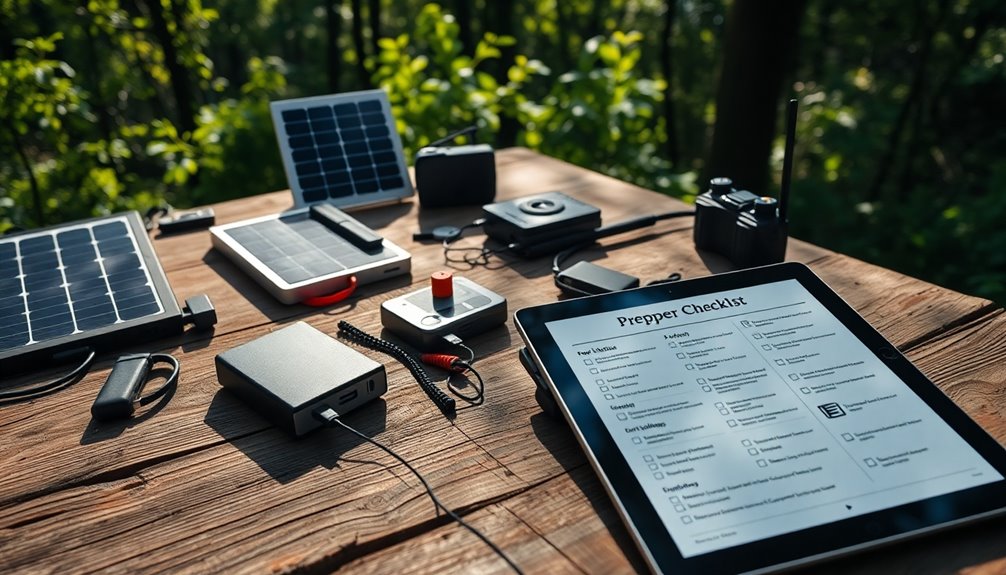
When it comes to preparedness, energy and communication tools are essential for maintaining safety and connectivity during emergencies. You'll want to gather items like generators, which can run on gas, propane, or even solar power. A tri-fuel generator is a fantastic choice, and make sure you have spare fuel—at least 90 gallons—to keep things running smoothly. Additionally, consider investing in deep cycle batteries for extended power storage to ensure your equipment remains operational during prolonged outages. Energy-efficient heat pumps can also be considered for a sustainable energy solution during emergencies.
Don't forget about solar power! A 100 Watt solar panel kit can charge your devices, while solar chargers for batteries and cell phones ensure you're always connected.
For communication, battery or solar radios are must-haves. They can keep you informed when the world outside is chaotic. Satellite phones and walkie-talkies are great for staying in touch with your loved ones, too.
Lighting is important, so grab some LED flashlights and headlamps for hands-free tasks. Propane lanterns can brighten up outdoor areas, while candles and matches are classic backups.
Lastly, keep a Faraday bag handy to protect your electronics from pesky EMPs. With these tools, you'll feel ready to tackle anything that comes your way!
Frequently Asked Questions
How Do I Create a Bug-Out Plan for Emergencies?
Creating a bug-out plan is super important!
First, think about what emergencies might happen around you, like floods or storms.
Next, gather your essentials in a bag—think food, water, and first aid supplies.
Map out at least two escape routes and where you'll go.
Don't forget to practice with your family so everyone knows their role.
It's like a treasure hunt, but with supplies and safety!
Stay prepared and have fun!
What Are the Best Self-Defense Tools for Preppers?
When you're preparing for emergencies, having the right self-defense tools can make a big difference!
Consider getting a stun gun or a taser, which can help keep attackers away. Pepper spray is great too, since it's easy to carry and effective.
Don't forget about personal alarms—they're loud and can scare off bad guys! A tactical pen is handy for writing and self-defense.
Stay safe and be ready for anything, you got this!
How Can I Store Seeds for Long-Term Survival?
To store seeds for long-term survival, keep them cool, dry, and dark—like a secret treasure!
Use airtight containers, like glass jars or metal tins, to protect them from pesky critters. You can even freeze totally dry seeds to make them last longer. Just remember to let them warm up before planting.
Organize your seeds by how long they last, and you'll be ready for anything nature throws your way! Happy planting!
What Skills Should I Learn for Self-Sufficiency?
To become self-sufficient, you should learn essential skills like gardening, so you can grow your own food, and food preservation techniques like canning.
Understanding basic carpentry and home maintenance helps you fix things around your house.
Don't forget about sewing; it's fun to create or mend clothes!
Also, learning first aid can keep you safe in emergencies.
With these skills, you'll feel confident and ready for anything life throws your way!
How Do I Maintain My Gear and Supplies Over Time?
To keep your gear and supplies in tip-top shape, set a schedule for regular inspections, checking for wear and tear.
Clean everything often, removing dust and grime to prevent overheating.
Don't forget to lubricate parts and replace anything worn out before it breaks!
Store supplies in cool, dry places, and check them every six months.
Conclusion
Now that you've got your prepper checklist ready, you're all set for whatever wild adventures come your way! By gathering your shelter, water, food, first aid, and energy tools, you're not just preparing for the unknown—you're becoming a superhero of survival! Remember, staying cheerful and organized makes the journey a lot more fun. So grab your gear, share your plans with friends, and get ready to tackle anything life throws at you. Adventure awaits!


